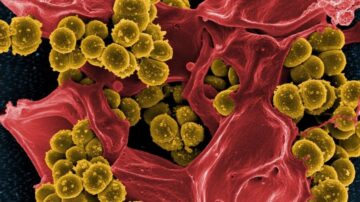Shelly Fan in Singularity Hub:
 Humans and bacteria are in a perpetual war.
Humans and bacteria are in a perpetual war.
For most of history, bacteria won. Before 1928, a simple scrape on the knee, a cut when cooking dinner, or giving birth could lead to death from infection. The discovery of penicillin, a molecule secreted from mold, changed the balance. For the first time, humans had a way to fight back. Since then, generations of antibiotics have targeted different phases of bacterial growth and spread inside the body, efficiently eliminating them before they can infect other people. But bacteria have an evolutionary upper hand. Their DNA readily adapts to evolutionary pressures—including from antibiotics—so they can mutate over generations to escape the drugs. They also have a “phone line” of sorts that transmits adapted DNA to other nearby bacteria, giving them the power to resist an antibiotic too. Rinse and repeat: Soon an entire population of bacteria gains the ability to fight back.
We might be slowly losing the war. Antibiotic resistance is now a public health threat that caused roughly 1.27 million deaths around the globe in 2019. The World Health Organization (WHO) and others say that without newer generations of antibiotics, surgery, cancer chemotherapy, and other life-saving treatments face increasing risk of death due to infection. Traditionally, a new antibiotic takes roughly a decade to develop, test, and finally reach patients. “There is an urgent need for new methods for antibiotic discovery,” Dr. Luis Pedro Coelho, a computational biologist and author of a new study on the topic, said in a press release. Coelho and team tapped into AI to speed up the whole process. Analyzing huge databases of genetic material from the environment, they uncovered nearly one million potential antibiotics.
More here.
